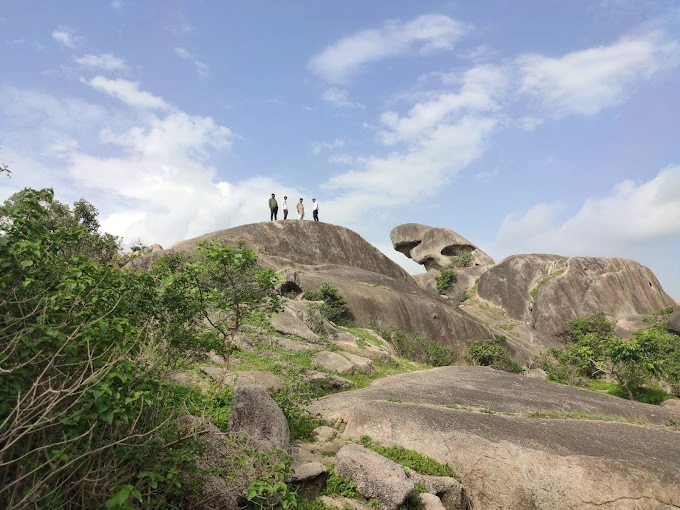The Best Time to Visit Mount Abu: A Traveler's Guide
Mount Abu, situated in the western Indian state of Rajasthan, is a popular hill station renowned for its scenic beauty and diverse flora and fauna. The best time to visit Mount Abu is from February to June and then again from September to December. During these months, the weather is pleasant, and the temperature is moderate, making it ideal for exploring the various attractions that Mount Abu has to offer. The spring and early summer months (February to June) allow visitors to witness the blooming of wildflowers and enjoy outdoor activities such as trekking and nature walks. On the other hand, the post-monsoon and winter months (September to December) offer clear skies, making it an excellent time for sightseeing and enjoying the stunning panoramic views of the surrounding landscapes.
Book here Mount Abu Tour Packages.
Winter season in Mount Abu (November to February)

Winter season in Mount Abu is a magical time that transforms the hill station into a serene paradise, attracting visitors seeking a respite from the heat of the plains. Typically occurring from November to February, temperatures can drop significantly, often reaching as low as 5°C (41°F) at night, offering a refreshing chill that contrasts with the warmer months. The pleasant daytime weather, characterized by sunny skies and cool breezes, makes it ideal for exploring the region’s picturesque landscapes, including the stunning Dilwara Temples and Nakki Lake. The winter months also bring about various local festivals and events, enhancing the cultural experience for tourists. Nature enthusiasts can revel in the beauty of the surrounding valleys and hills, often adorned with mist and the vibrant flora that thrives in the cooler climate.
Summer season in Mount Abu (March to June)

The summer season in Mount Abu offers a unique blend of natural beauty and pleasant weather, making it an ideal getaway for those seeking respite from the scorching heat of the plains. Nestled amidst the lush Aravalli Range, this hill station experiences mild temperatures, often ranging from 20 to 30 degrees Celsius, providing a refreshing contrast to the sweltering temperatures found elsewhere in Rajasthan. Visitors can enjoy breathtaking views, serene lakes, and the stunning Dilwara Temples, which are renowned for their intricate marble carvings. The cool evenings and vibrant local culture make summer in Mount Abu a delightful experience, attracting both tourists and locals to indulge in leisurely walks, boating, and exploring the diverse flora and fauna that thrive in this elevated region.
Monsoon season in Mount Abu (July to September)

Monsoon season in Mount Abu brings a refreshing transformation to the region, as the picturesque hill station in Rajasthan experiences lush greenery and rejuvenated landscapes. Typically occurring from June to September, the monsoon rains create a dramatic contrast against the rugged terrain and are accompanied by cooler temperatures, attracting numerous tourists seeking respite from the sweltering heat of the plains. The cascading waterfalls, vibrant flora, and mist-covered hills provide an enchanting backdrop for nature lovers and adventure enthusiasts alike. Additionally, local festivities and cultural events often flourish during this time, offering visitors a unique glimpse into the rich traditions of the area while fostering a sense of tranquillity and connectivity with nature.
Conclusion
The best time to visit Mount Abu is from February to June and then again from September to December. During these months, the weather is pleasant, and the temperature is moderate, making it ideal for exploring the various attractions that Mount Abu has to offer. Whether you want to witness the blooming of wildflowers, enjoy outdoor activities, or experience the post-monsoon and winter months offering clear skies and stunning panoramic views, Mount Abu has something to offer during these periods. Each season provides a unique and captivating experience, whether it’s the magical winter transformation, the pleasant weather and natural beauty of summer, or the refreshing lush greenery and rejuvenated landscapes during the monsoon season.
Here you can also check our Mount Abu Tour Packages.
People also ask about Best time to visit Mount Abu
1. What is the best time of year to visit Mount Abu?
The best time to visit Mount Abu is between November and March. During these months, the weather is cool and pleasant, making it ideal for sightseeing and outdoor activities.
2. Is Mount Abu a good destination during the monsoon season?
Yes, Mount Abu is a beautiful destination during the monsoon season (July to September). The region receives moderate to heavy rainfall, which enhances the greenery and makes the landscape more picturesque. However, outdoor activities might be limited due to rain.
3. How is the weather in Mount Abu during the summer months?
Summer in Mount Abu (April to June) is relatively mild compared to other parts of Rajasthan. Temperatures range between 20°C to 33°C, making it a popular retreat to escape the scorching heat of the plains. However, afternoons can still get quite warm.
4. What makes winter the peak tourist season in Mount Abu?
Winter (November to February) is the peak tourist season in Mount Abu due to the cool, comfortable climate. The temperature ranges from 12°C to 28°C, perfect for enjoying outdoor activities, exploring temples, and visiting attractions like Nakki Lake and Dilwara Temples.
5. What activities can I enjoy in Mount Abu during the winter?
Winter is an excellent time to visit Mount Abu for various activities. You can enjoy trekking on trails lined with pine trees, visiting the famous Dilwara Temples, or taking a boat ride on Nakki Lake. The beautiful sunset points, like the Honeymoon Point, are also a must-visit. The cool weather makes these activities much more enjoyable, so dress warmly!
6. Is it advisable to visit Mount Abu during the off-season?
Visiting Mount Abu during the off-season, particularly in the monsoon (July to September), can be enjoyable for those who prefer fewer crowds and lush green landscapes. However, be prepared for possible travel disruptions due to rain.
